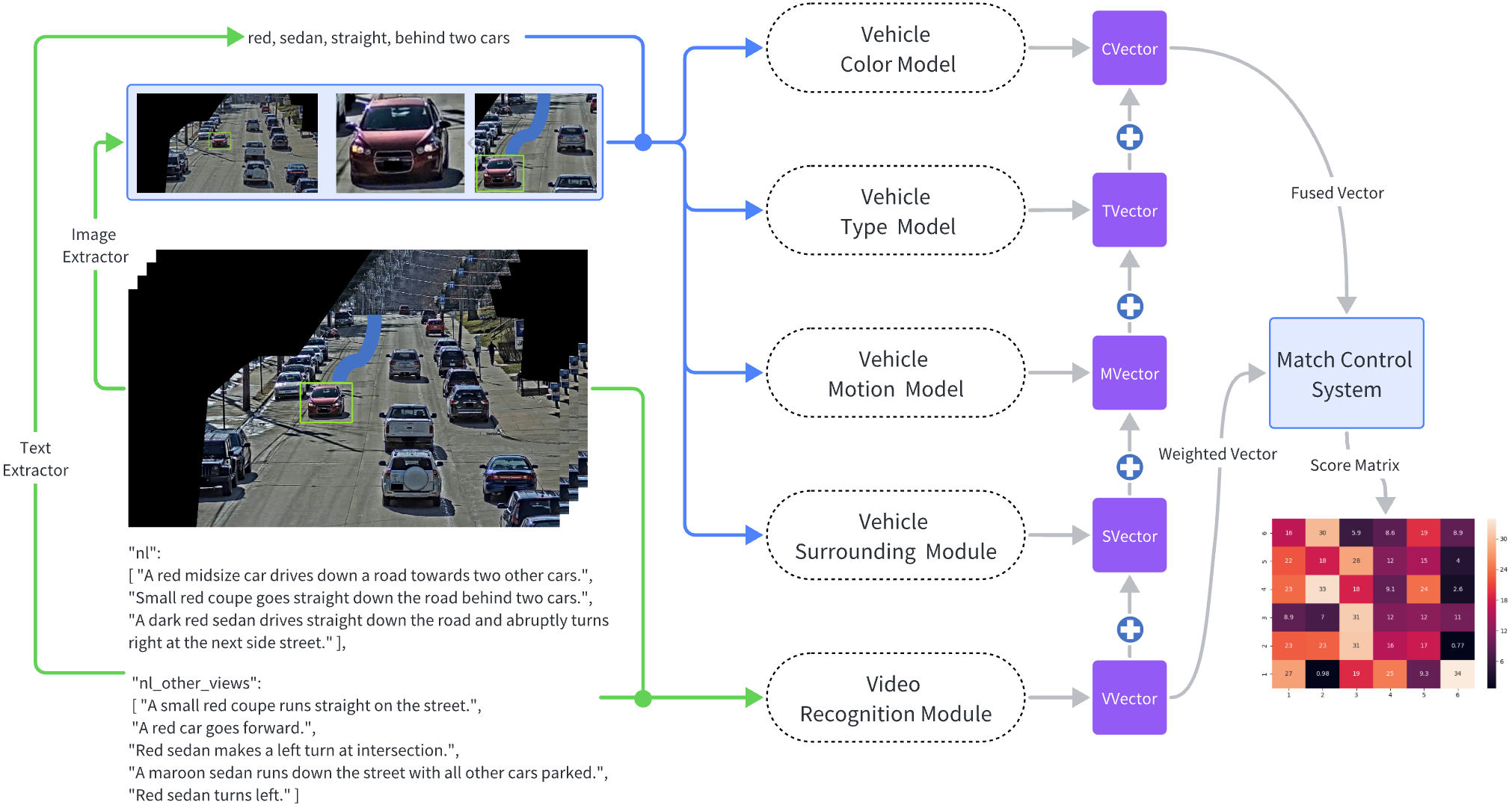The code is for our paper in the 7th AI City Challenge Track 2, Tracked-Vehicle Retrieval by Natural Language Descriptions, reaching the 2nd rank on the public leaderboard.
Through the development of multi-modal and contrastive learning, image and video retrieval have made immense progress over the last years. Organically fused text, image, and video knowledge brings huge potential opportunities for multi-dimension, and multi-view retrieval, especially in traffic senses. This paper proposes a novel Multi-modal Language Vehicle Retrieval (MLVR) system, for retrieving the trajectory of tracked vehicles based on natural language descriptions. The MLVR system is mainly combined with an end-to-end text-video contrastive learning model, a CLIP few-shot domain adaption method, and a semi-centralized control optimization system. Through a comprehensive understanding the knowledge from the vehicle type, color, maneuver, and surrounding environment, the MLVR forms a robust method to recognize an effective trajectory with provided natural language descriptions. Under this structure, our approach has achieved 81.79% Mean Reciprocal Rank (MRR) accuracy on the test dataset, in the 7th AI City Challenge Track 2, Tracked-Vehicle Retrieval by Natural Language Descriptions, rendering the 2nd rank on the public leaderboard.
pip install -r requirements.txtMLVR
├── data # put aicity2023 track 2 data
├── docs # pictures and paper
├── preprocessing # process the data for model
├── model # modules for MLVR
│ ├── vrm # Video Recognition Module
│ ├── vct # Vehicle Color and Type Modules
│ ├── vmm # Vehicle Motion Module
│ └── vsm # Vehicle Surrounding Module
├── postprocessing # Model Postprocessing
│ ├── matrix # vrm, vct, vmm, vsm score matrices
│ └── final_results.json # submit result 81.79%
├── requirements.txt
└── README.md
- Get images from the video
cd ./preprocessing
python extract_vdo_frms.py- Get background of the images
python generate_median.py- Generate the video clip for video recognition module
python create_video_clip.py- Format the text input for video recognition module
python create_vrm_data.py- Crop the vehicle images for vehicle color and type modules
python crop_vehicle_bbox.py- Format the text input for vehicle color and type modules
python create_vct_data.py-
Video Recognition Module (baseline)
This part is modified from X-CLIP.
Please download the pretrain model here for test, and put it in
\model\vrm\ckpts\.
cd ./model/vrm
sh ./scripts/train.sh # train
sh ./scripts/test.sh # test-
Vehicle Color and Type Modules
This part is modified from Tip-Adapter.
cd ./model/vct
python train.py --config vehicle_color_train.yaml # vehicle color module train
python test.py --config vehicle_color_test.yaml # vehicle color module test
python train.py --config vehicle_type_train.yaml # vehicle type module train
python test.py --config vehicle_type_test.yaml # vehicle type module test- Vehicle Motion Modules
cd ./model/vmm
python main.py # vehicle color module-
Vehicle Surrounding Modules
This part is modified from GLIP.
cd ./model/vsm/branch1
python vsm1.py # vehicle surrounding module branch 1
cd ./model/vsm/branch2
python get_candidates.py # vehicle surrounding module branch 2Run the following command to generate the final submit result 81.79%.
cd ./postprocessing
python mcs.py # match control system